
"Thirty years ago in Shanghai, on a moonlit night... We may not have had the chance to see the moon of thirty years ago. Young people think that the moon of thirty years ago should have been a red and yellow wet halo the size of a copper coin, like a teardrop falling on a Dooyunxuan letterhead, old and blurry." This is a passage about Dooyunxuan in the opening of Eileen Chang's 1943 novel The Golden Lock.
The renowned cultural and time-honored brand Duoyunxuan was founded on September 6, 1900. The Paper has learned that on September 6, 2025, the 125th anniversary of Duoyunxuan's founding, an exhibition showcasing the millennium-old heritage of woodblock watermarking will be simultaneously on display at Duoyunxuan's two main exhibition halls.

Exhibition site
The “Exquisite Pear and Date Paintings – The Heritage Exhibition of Famous Woodblock Watermark Carvings and Paintings by Dooyunxuan” will be on display from September 6 at the Dooyunxuan Art Center (No. 1188, Tianyaoqiao Road, Xuhui District), while the Dooyun Art Museum (4th Floor, No. 422, Nanjing East Road) will exhibit “Four Hundred Years of Engraving – The 40th Anniversary of the Reproduction of the Rare Edition of “Shizhuzhai Calligraphy and Painting Collection”.”
The woodblock watermarking technique, formerly known as "饾版," involves carving images into wood and printing them on plain paper. It's a uniquely Chinese technique of overprinting and color-block printing, a development of ancient Chinese woodblock printing. As early as the Tang Dynasty, the Chinese used woodblock printing to produce books and pictures. The "Jetātthāgata Grove," the title page of the Diamond Sutra discovered in the Mogao Grottoes in Dunhuang, is one of the earliest surviving woodblock prints, dating back over 1,100 years.

In the 1980s, Duoyunxuan reproduced the rare Ming Dynasty copy of "Luoxuan Bian Gu Jian Pu"
By the Song Dynasty, woodblock printing technology had matured, developing a relatively complete process. By the late Ming Dynasty, woodblock watermarking techniques reached their peak, with exquisite works such as the "Ten Bamboo Studio Calligraphy and Painting Collection" appearing, and intricate techniques such as "engraving" and "arching" were developed.
After the mid-Qing Dynasty, woodblock New Year paintings became popular throughout China, forming renowned production areas such as Yangliuqing in Tianjin, Taohuawu in Suzhou, and Weifang in Shandong. This further popularized and developed the art of woodblock watermarking. As photography gradually became incorporated into platemaking, traditional Chinese woodblock printing, a tradition passed down for millennia by the early 20th century, gradually retreated from the mainstream of book printing. The increasingly niche techniques of "饾版" (饾版) and "拱花" (驚花) continued to thrive in traditional watermarked papermaking.
Since its founding in 1900, Shanghai Duoyunxuan has been dedicated to inheriting and developing the traditional art of woodblock watermarking. In 2006, Duoyunxuan's woodblock watermarking technique was listed as one of the first batch of national intangible cultural heritage.
Duoyunxuan woodblock watermarked famous paintings in "Miraculous Pear and Date"
"Exquisite Pear and Date - Dooyunxuan Woodblock Watermark Famous Engraving and Painting Inheritance Exhibition" is divided into chapters such as "Dooyun Papermaking", "Reproduction of Rare Books", "Freehand Painting Spirit", "Essence of Painting and Calligraphy", "Ming Dynasty Style", "Inheritance of Brush and Ink", "Contemporary Song Dynasty Edition", and "Dooyun Flowers". From the origin of the craft to the important representative works, it shows the woodblock watermarking skills inherited and protected by Dooyunxuan, which still plays an irreplaceable role in the reproduction of Chinese calligraphy and painting, the reproduction of rare ancient books, the production of traditional watermarked paper, and the practice and exploration of watermark printmaking language.
The exhibition features "Dooyunxuan Paper Album (Volume 1)" and "Shanghai Paper Album" from the early 1960s, a copy of "Qiu Ying's Hunting in the Field" copied by Hu Yefu, "Dooyun Four Carvings", "Luoxuan Bian Gu Paper Album" and "Shizhuzhai Calligraphy and Painting Album" reproduced from the 1980s, as well as the recently completed "Dooyun Poetry Paper Album" series and the "Flower-filled" giant poster print "Purple Clouds of Clouds Rising and Flowers Blooming", most of which are collections of preserved version level and are rarely displayed together.
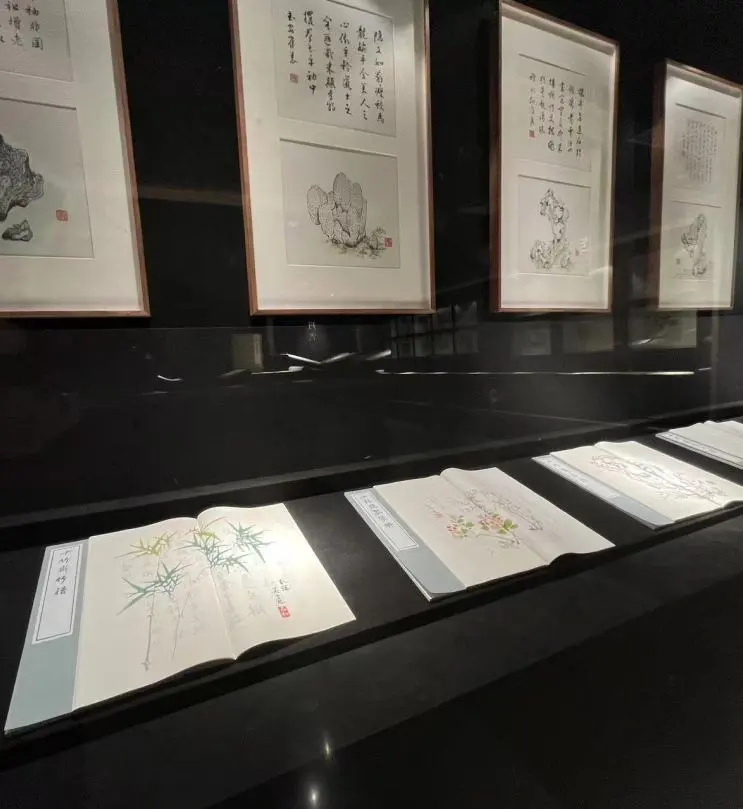
Exhibition site
The exhibition also displays "Dooyunxuan Paper Album (Volume 1)" and "Shanghai Paper Album" from the early 1960s, a copy of "Qiu Ying's Hunting in the Field" copied by Hu Yefu, "Dooyun Four Carvings", "Luoxuan Bian Gu Paper Album" and "Shizhuzhai Calligraphy and Painting Album" reproduced from the 1980s, as well as the recently completed "Dooyun Poetry Paper Album" series and the "Flower" giant poster print "Purple Clouds of Clouds Rising and Flowers Blooming", etc. Most of them are collections of the preserved version level, and it is rare to see them all together.
"Four Hundred Years of Seal Carving" Presents a Rare Copy of "Ten Bamboo Studio Calligraphy and Painting Collection"
The exhibition "Four Hundred Years of Sealing - 40th Anniversary of the Reproduction of the Rare Edition of "Ten Bamboo Studio Calligraphy and Painting Collection" and the Dooyunxuan Woodblock Watermark Protection Achievements Exhibition" exhibited at the Dooyunxuan Art Museum is not only a tribute to the more than 30 woodblock watermark predecessors who took four years to reproduce the eight volumes and 16 volumes of the "Ten Bamboo Studio Calligraphy and Painting Collection" forty years ago, which marked the maturity of the woodblock watermark technique and reproduced the original appearance of the Ming edition, but also a report on the inheritance and protection achievements of the Dooyunxuan woodblock watermark since it was listed as a national intangible cultural heritage.
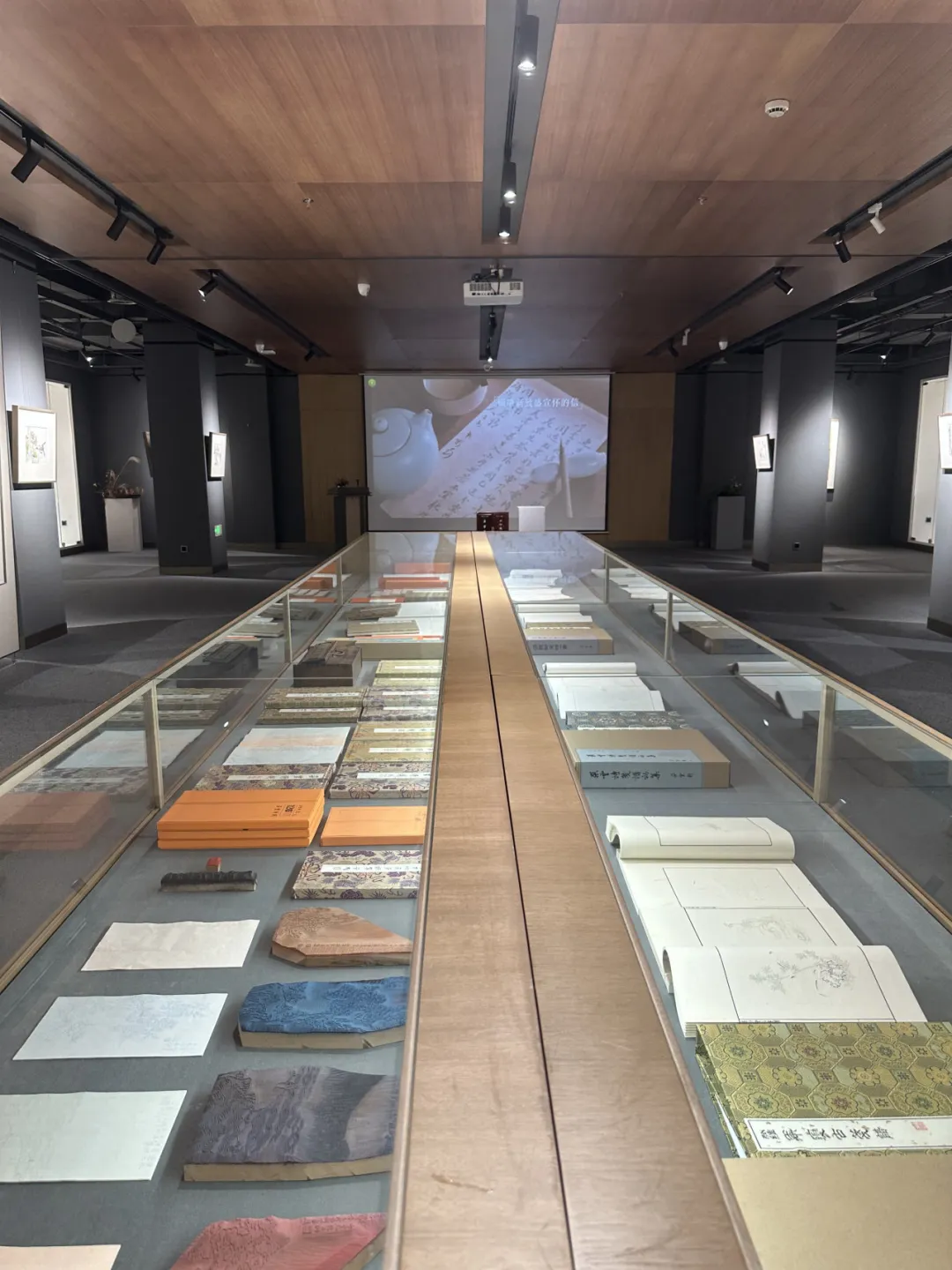
Exhibition site
The exhibition features a special edition of the 1989 Duoyunxuan woodblock watermarked "Ten Bamboo Studio Calligraphy and Painting Collection," presented in a mahogany box, after it was selected for the Leipzig International Book Fair and won the "National Award." The exhibition also highlights Duoyunxuan's recent woodblock watermarked traditional paper works, including nearly 100 varieties of Duoyun poetry paper, paper albums, flower paper scrolls, and large four-foot-long painted paper. Notably, the exhibition also features a selection of papermaking engravings, including large-scale engravings and embossed engravings, allowing visitors to further experience the ingenuity of traditional techniques.
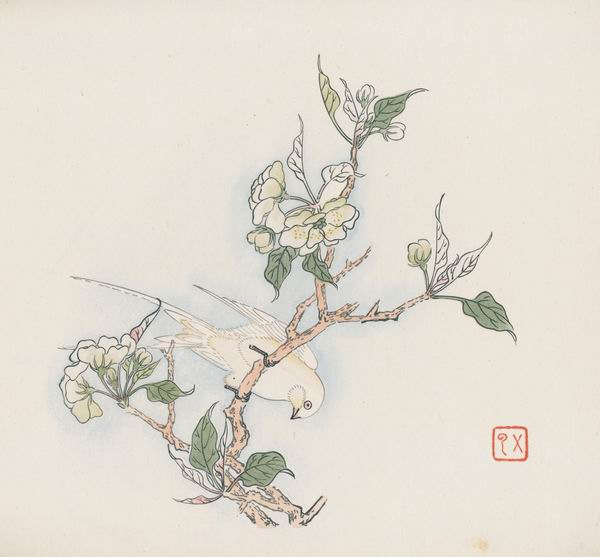
Selection 1 from the Ten Bamboo Studio Feather Chart
Since its founding, Duoyunxuan has inherited the traditional art of woodblock watermarking, developing it into a re-creative art form that integrates painting, engraving, and printing. Using simple tools and sophisticated techniques, through three purely handcrafted processes—outlining, engraving, and watermarking—the artist recreates the brushwork and ink rhythm of Chinese calligraphy and painting with such vivid fidelity that it's practically indistinguishable from the original. Duoyunxuan's 1985 reproduction of the rare woodblock watermarked edition of "Ten Bamboo Studio Calligraphy and Painting Collection" won the sole highest award—the "National Grand Prize"—at the 1989 Leipzig International Book Art Fair in Germany.
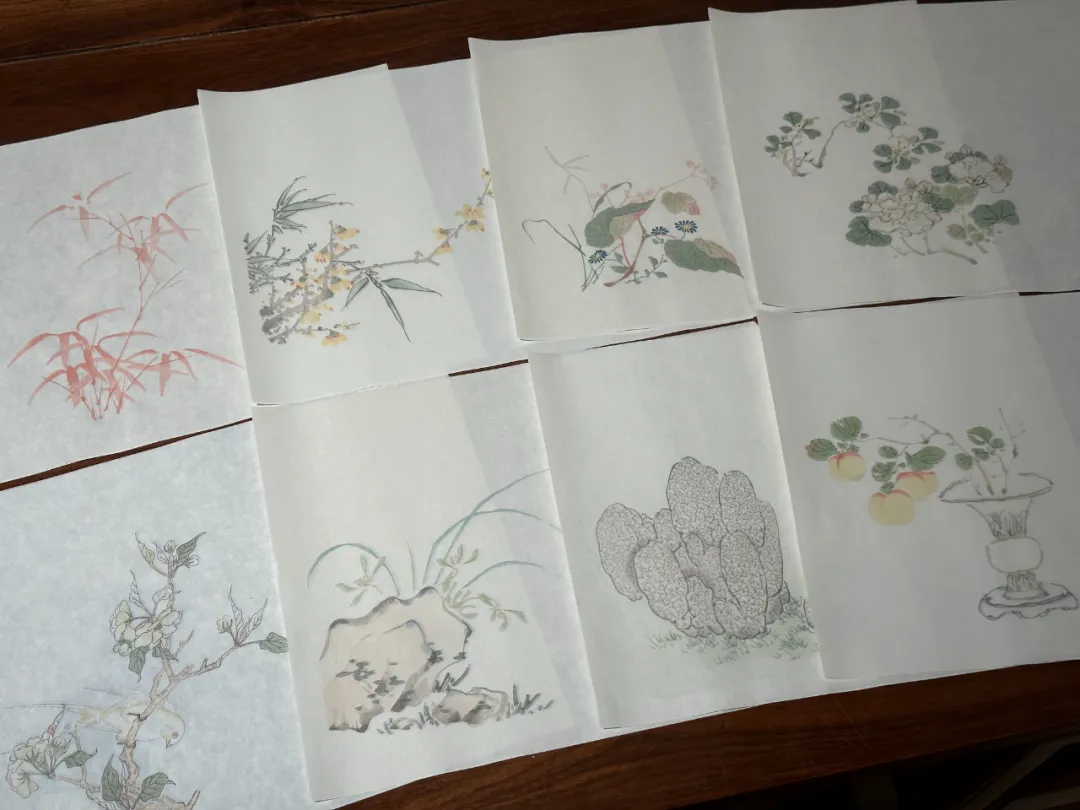
The 40th anniversary commemoration of the restoration of the rare edition of Shizhuzhai Calligraphy and Painting Collection
"As a national intangible cultural heritage, the difficulty of inheriting the Dooyunxuan woodblock watermark technique does not come from the technique itself - its technique has always maintained a high level and has been passed down in an orderly manner, but perhaps it lies more in the urgency of overall protection." Zheng Mingchuan, a national intangible cultural heritage inheritor of the Dooyunxuan woodblock watermark, said.
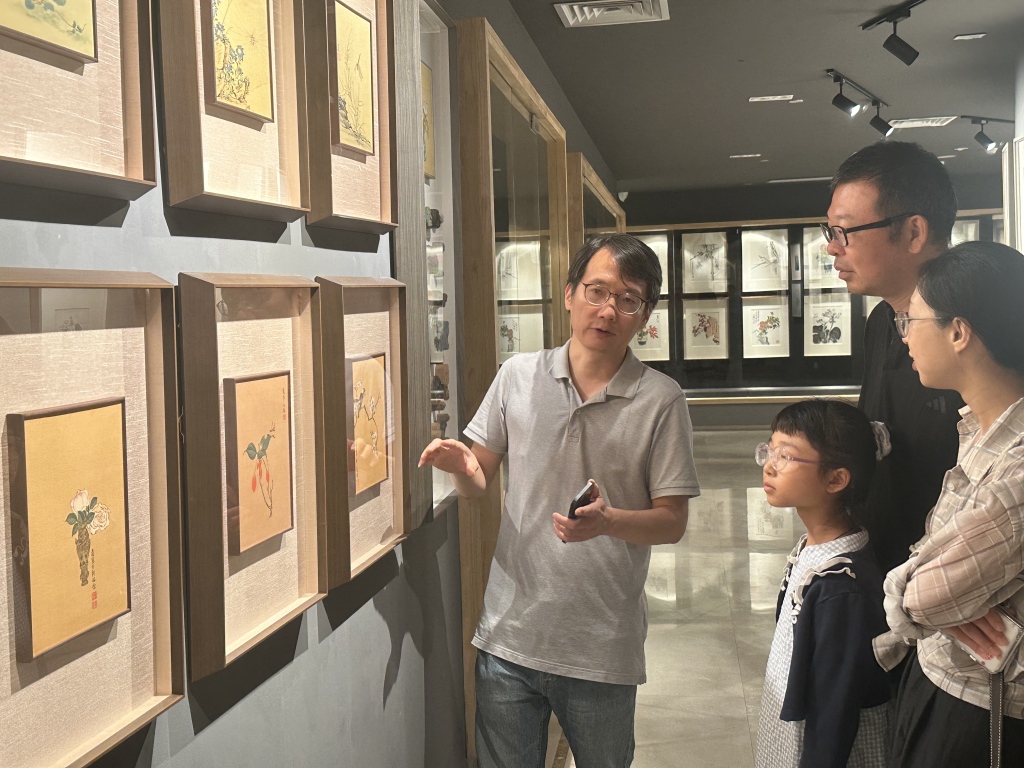
Zheng Mingchuan (left), a national intangible cultural heritage inheritor of Duoyunxuan woodblock watermarks, at the exhibition
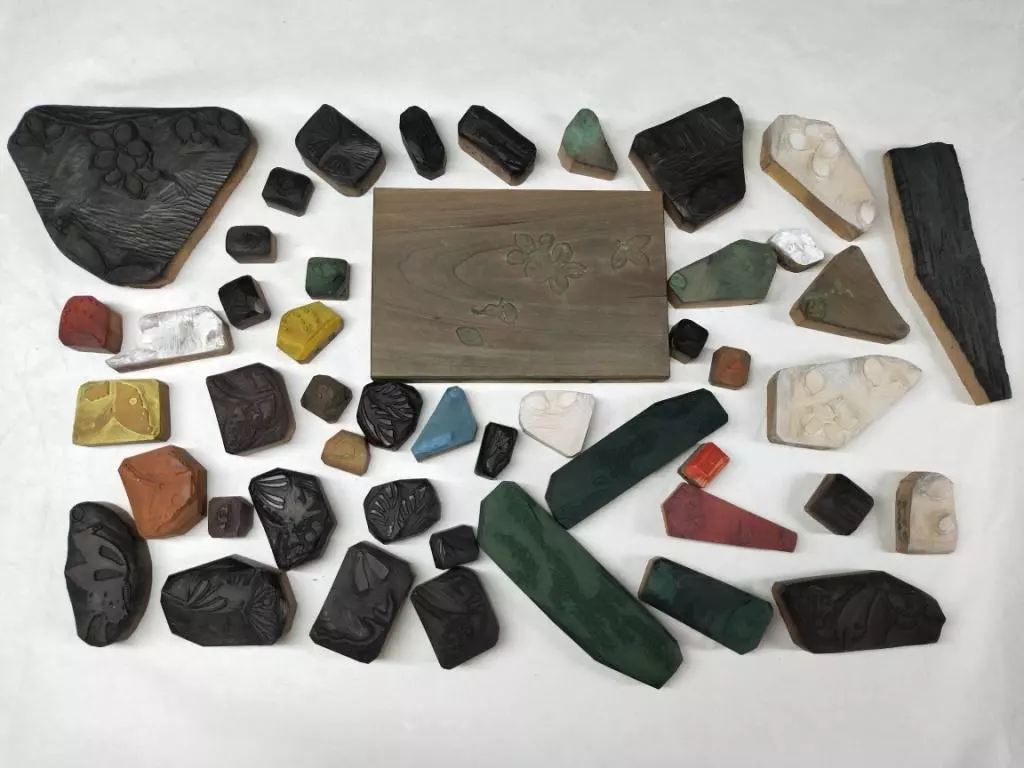
Various printing plates
For this exhibition, Duoyunxuan also attempted to combine digital technology with traditional craftsmanship, using computer-aided plate division and design to improve production precision and efficiency. Duoyunxuan also developed a series of woodblock watermark derivatives, such as cultural and creative products and home decoration, to better integrate traditional skills into modern life.


